
Sustainable Agriculture Practices & Their Management
The importance of sustainable agriculture summons close attention today, and here is why. People strongly rely on farming for fiber, food, and livestock forage, and while the planet’s population grows, the demand raises too, with a threat of a resource shortage.
Sustainable agriculture insists on moderate consumption of non-renewable resources, with nature and future generations in mind. The approach advocates switching to renewable energy sources, sparing land use, and eliminating nature pollution. Farmers seek successful management solutions, and the remote sensing technology in sustainable agriculture provides data for the most accurate and reliable analytics.
What Is Sustainable Agriculture?
The concept fosters stable and continuous production, with enough resources in the future. Its practices accord with the five principles of sustainable agriculture outlined by FAO:
- Boost food chain productivity.
- Protect and spare the environmental resources.
- Improve people’s wellbeing and economic growth.
- Foster ecosystems and communities’ resilience.
- Support with governmental initiatives and regulations.
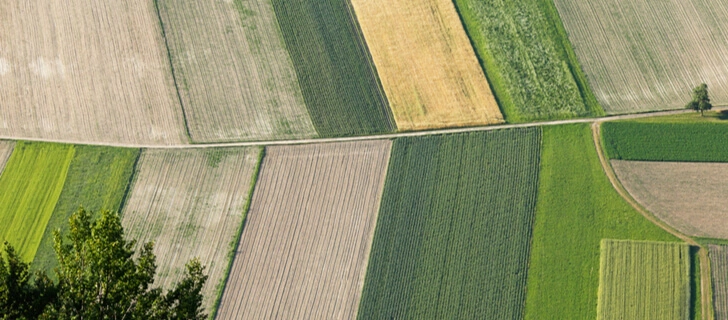
What Is The Goal Of Sustainable Agriculture?
The primary sustainable agriculture objectives are food and fiber security both these days and in the future. Other goals include:
- ensuring soil fertility and encouraging biodiversity;
- improving the ecological conditions and preventing pollution;
- consuming less non-renewable resources (e.g., fossil fuels);
- supporting rural economic development;
- enhancing the quality of farmers’ health, rights, and life in general;
- raising people’s environmental awareness and responsibility.
Measurement Of Sustainability In Agriculture
The concept rests on 3 pillars of sustainable agriculture covering the economic, social, and environmental spheres.
- The environmental (agri-ecological) scale fosters a nature-friendly approach in farming, with the least pollution and consumption of non-renewable resources.
- The social (social-territorial) scale cares about people providing enough food for our planet’s population and fair employment and development for local communities.
- The economic scale ensures the farming business’s viability, efficiency, and profitability.
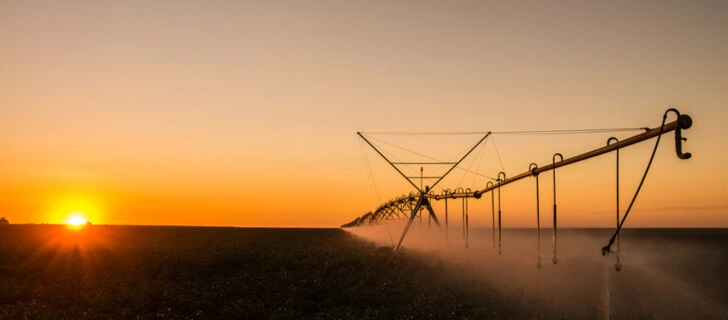
Sustainable Agriculture Practices
Sustainability practitioners switch from fertilizers to nitrogen-fixing plants, from aggressive pesticides to natural enemies, and more techniques mentioned below.
Crop Rotation In Sustainable Agriculture
Crop rotation implies planting different crop types in a specific sequence, ensuring crop diversity in sustainable agriculture and being a more rational approach to farming than monoculture.
In particular, crop rotation:
- minimizes compaction thanks to different root systems;
- provides nitrogen with N-fixing plants (biological nitrogen fixation for sustainable agriculture);
- assists in pest control since certain pest species attack their host crop types;
- reduces soil depletion;
- mitigates farming risks; avoid unjustified chemical inputs;
- adds organic matter and stimulates soil biota’s activity.
Irrigation Techniques In Sustainable Agriculture
Crop production greatly relies on irrigation involving a tremendous use of aquatic and energetical resources. Sustainability aims to support plant hydration needs yet optimize water and energy consumption. Sustainable water use in agriculture is carried out through planting less-water-consuming crop species and implementing smart irrigation techniques. In particular, drip vs. furrow (flood) irrigation requires 20-40% less water while getting 20-50% more crops .
Sustainable Agriculture And Cover Crops
By sowing cover crops off-season, farmers protect their fields from soil erosion. The technique also helps in building up the organic matter when cover crops are used for green manure, which decreases expenses on fertilizers. Besides, cover cropping tackles weeds and retains soil moisture. Flowering cover crops naturally support the populations of bees and other pollinators.
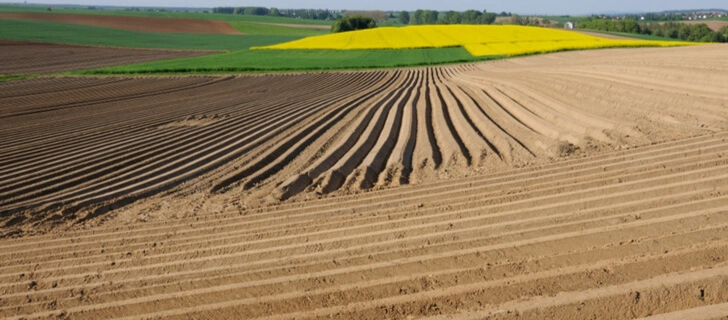
Sustainable Agriculture Activities With Minimum Or Zero Tillage
Opposite to regular plowing in conventional farming, reduced or no-till practices prevent soil loss due to wind and water erosion. The no-tilling approach suggests sowing right into the crop residue with the least soil and biota disturbance. Since planters or drillers incorporate seeds immediately after digging, no-till prevents soil compaction, minimizes operation time and fossil emissions, contributing to economic and ecological stability.
Pest Control And Integrated Pest Management In Sustainable Agriculture
Apart from chemical pest control, integrated pest management (IPM) employs other methods that are even more efficient when used in complex. The role of IPM in sustainable agriculture is to minimize harm for humans and non-target species as well as nature in general. Therefore, integrated pest management in sustainable agriculture primarily relies on biological and cultural control. In particular, biological measures include (but are not limited to) using predators like ladybugs to kill aphids or poultry to eat up pests, their larvae, and eggs (e.g., ants, bugs, flies, woodlice, etc.).
Integrated Weed Management And Sustainable Agriculture
Sustainable weed control strategies aim to preserve natural resources by avoiding chemicals and introducing nature-friendly practices. These imply using more resilient crop types, cover crops, insects and birds to destroy weeds, manual and mechanical weeding, allelopathic plants, crop rotation, and other organic farming measures of control.
Permaculture As A Sustainable Agriculture Technique
The word “permaculture” derives from permanent agriculture and culture. Permaculture imitates naturally established ecosystems with their diversity, stability, and harmony. The technique promotes sustainability by reducing waste, using replenishable sources, tackling pollution, and improving soil fertility in nature-friendly ways.
Other Sustainable Agriculture Methods
The list of practices to support sustainability in farming is rather extensive and also includes:
- polyculture,
- crop residue management (CRM),
- biodynamic and organic farming,
- integration of livestock and crops,
- sustainable agriculture intercropping,
- mulching,
- conservation tillage,
- using biofuels and zero-emissions transport,
- agroforestry,
- urban agriculture, etc.
The choice of sustainable agriculture activities depends on the crop type and farm specifics. Still, the best practice is holistic management of the whole systems and landscapes, where all elements are interconnected and equally valued.
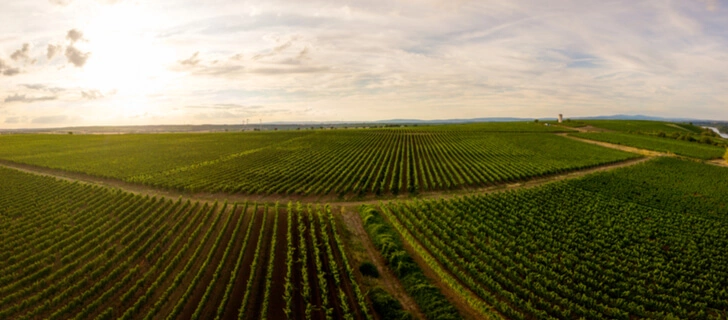
EOSDA Crop Monitoring
Fields analytics based on high-resolution satellite images to track all the changes on-the-spot!
What Are The Benefits Of Sustainable Agriculture?
The advantages of sustainable farming cover all three aspects of sustainability.
The economic benefits of sustainable agriculture comprise:
- lower expenses with precision farming techniques;
- food security thanks to improving crop productivity in sustainable agriculture;
- saved energy by restaining from fossil fuels whenever feasible.
Advantages of sustainable farming in the social sphere are:
- better salaries for local communities;
- social equality;
- public health thanks to minimal chemical contamination.
Namely, sustainable agriculture benefits the ecology in the following way:
- protects natural ecosystems;
- supports biodiversity and creates close-to-natural conditions for livestock;
- assists in soil conservation by preventing soil erosion and nutrient depletion;
- eliminates water contamination and air pollution;
- saves non-renewable resources.
Apart from significant benefits, there are certain issues farmers are facing in sustainable agriculture implementation. Lack of governmental initiatives, research, and material base for site-specific applications are among the challenges that may arise.
The sparing attitude provides advantages for the future but implies some disadvantages of sustainable agriculture nowadays. These are increased labor inputs due to minimal fueled equipment use or shorter shelf life due to eliminated chemical applications. Besides, land protection limitations generally decrease crop production volumes.
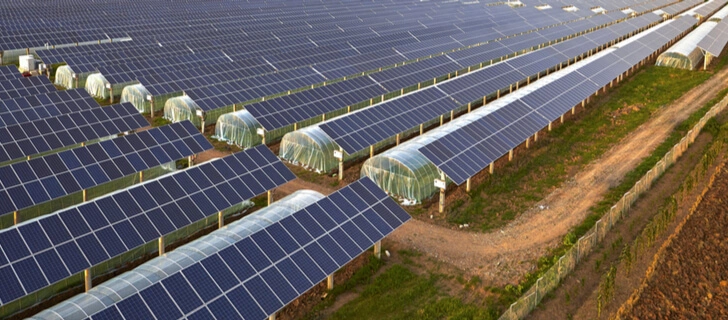
Sustainable Agriculture Resources
Food security can be achieved through the conservation of natural resources for sustainable agriculture. These resources are soil, water, energy, and air, and their availability for crop production in the future essentially depends on their correct management nowadays.
Sustainable Agriculture Via Soil Management
Soil is the essential environment for plants. Sufficient agricultural production won’t be feasible on soils that are poor or unsuitable for farming, while sustainable agriculture can reduce soil erosion and restore soil fertility. Besides, sustainability strongly disapproves of expanding agricultural lands, keeping a particularly sharp eye on deforestation for oil palm cultivation and avocado farming.
How Does Sustainable Agriculture Improve Soil Fertility?
A sustainable farm ensures soil fertility with polyculture, crop rotation, green and animal manures, etc. Soil fertility management for sustainable agriculture is fundamental because fertile soils supply enough nutrients for crop development, making plants more vigorous and resistant to crop diseases and pest attacks.
How Does Sustainable Agriculture Aid In Soil Conservation?
Soil conservation is an important part of sustainable agriculture as it supports soil fertility and addresses topsoil loss, primarily through soil aggregation and preventing soil erosion. Among others, sustainable agriculture methods that reduce soil erosion are terrace farming, cover crops, windbreaks construction, and minimum-till.

Sustainable Agriculture And Water Conservation
Water enables artificial irrigation, which is the only way to carry out agricultural activities under a lack of rainfall, and the need for water resources for the years to come urges their responsible use. Sustainable management of water resources in agriculture should simultaneously imply:
- eliminating soil salinization by desalinization;
- preventing fertilizer leakage that contaminates soil and causes waterbed sedimentation;
- optimizing water use via smart irrigation, rainwater harvesting, and water recycling;
- averting the destruction of riparian habitats within watersheds;
- opting for drought-prone species;
- considering the necessity of planting in atypically dry years (based on historical weather analytics to predict weather trends).
Non-Renewable And Renewable Energy For Sustainable Agriculture
As for now, agriculture strongly relies on petroleum-based fuel, which is a non-renewable source. The only way to overcome this dependence is to consider the usage of “energy-smart” farming systems, exploiting renewable energy sources for sustainable agriculture. The most promising concepts and initiatives in this field are:
- installing solar-powered high-efficiency irrigation (HEI) systems;
- adopting bio-fueled equipment;
- growing crops for alternative fuels production;
- converting biomass energy (from crops and organic wastes);
- harvesting wind/solar energy to power farming enterprises.
Impact Of Sustainable Agriculture On The Air
Clean, fresh air is vital for breathing while air impurities are disruptive to health. However, nearly all agricultural activities pollute the atmospheric air with drifts from chemical applications, dust due to field activities, fossil-fuel emissions from agricultural equipment, and livestock methane production. In 2019, farming was responsible for 10% of all U.S. GHG (greenhouse gas) emissions , which was 12% higher than in 1990.
Options to improve air quality may include dust-eliminating activities like reduction of tillage, cover crop and agroforestry practices, and installation of windbreaks. Greenhouse gas emissions can be decreased through:
- shortening fossil-fuel equipment use;
- adjusting cattle food to reduce methane production due to enteric fermentation;
- controlling manure decomposition.
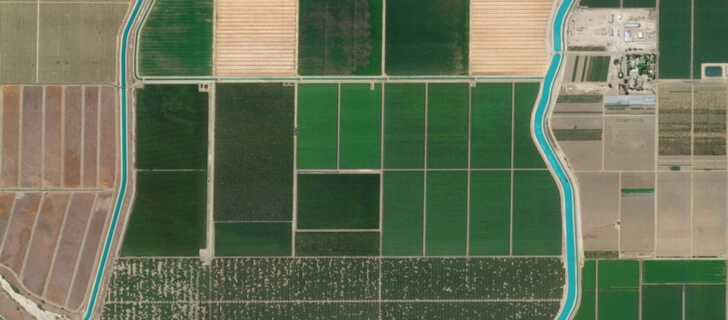
Satellite Technologies For Sustainable Agriculture
Sustainable crop production doesn’t merely mean a stable business to farmers. It is a concern for every single person and organization responsible for food security. Accurate information on food products sufficiency is required by national and global trading companies, farming enterprises, statistical agencies, governmental and ecological bodies, etc.
New technologies in sustainable agriculture enable ongoing monitoring of farming processes and facilitate their management. Among the most avant-garde ones, remote sensing technology in sustainable agriculture is a reliable source for analyzing and predicting crop development, field health and productivity, resource use, biodiversity, etc.
The EOSDA Crop Monitoring platform from EOSDA is a handy online tool for precision farming implementation, promoting sustainable agriculture. In particular, EOSDA Crop Monitoring allows efficient smart crop monitoring and resource management in the following ways.
Effective use of chemicals (fertilizers and crop protection substances) is facilitated by the VRA maps on the platform, which enable site-specific variable rate applications. The VRA maps divide the field into several zones. Healthy vegetation areas are displayed in green colors, while critical zones are highlighted in yellow and red. By differentiating required rates and treating the green and red zones correspondingly, farmers can reduce chemical inputs, which is healthier both for a grower’s budget and nature.
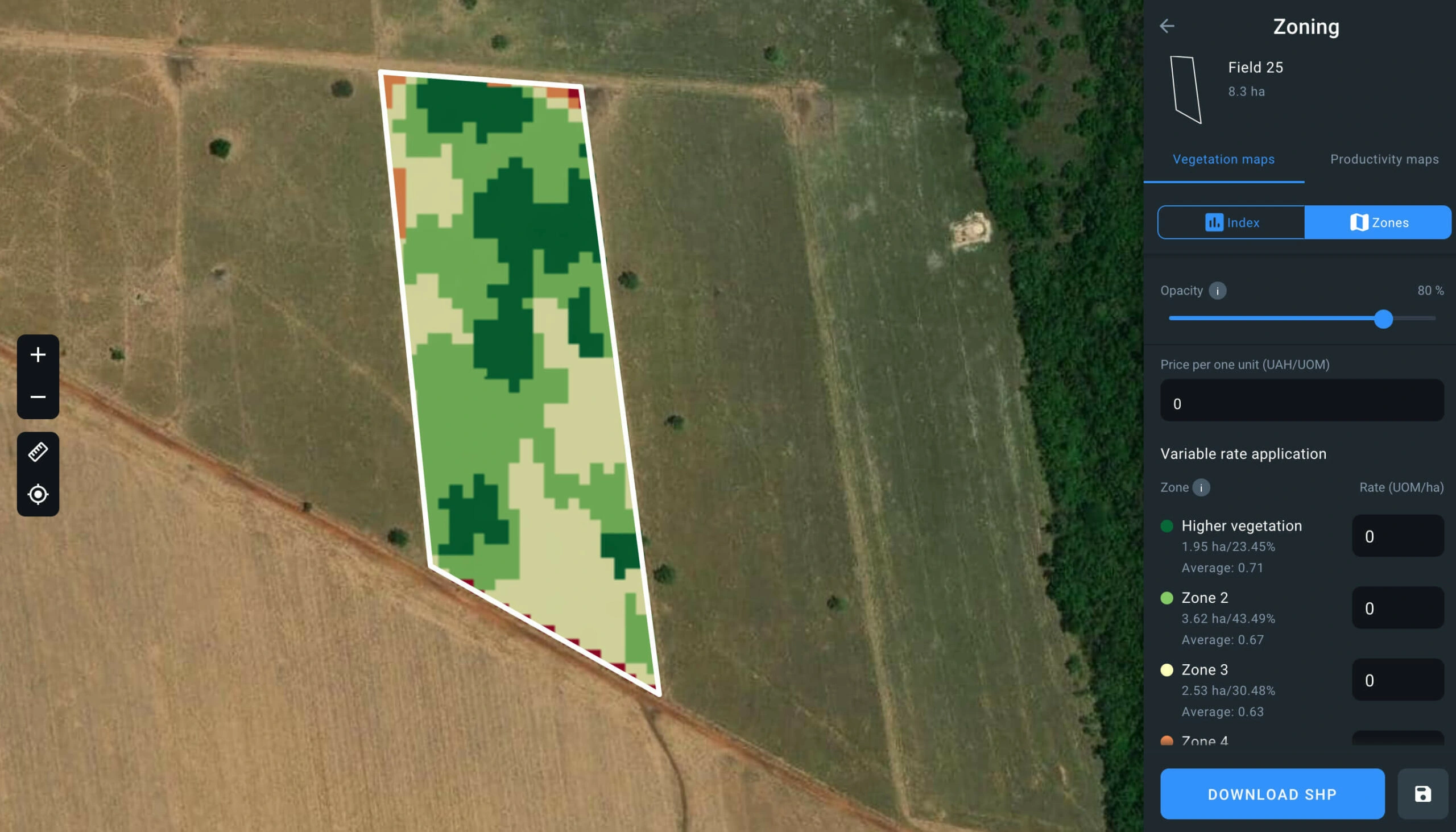
Effective water use is carried out with the NDMI index and data on the soil moisture on the product. These parameters monitoring provides timely information on possible problems that can be caused by waterlogging or water stress in plants. Agronomists can ensure healthy crop development and save yields by tackling hydration lack or excess correspondingly. Besides, weather forecasts on EOSDA Crop Monitoring allow skipping irrigation events and saving water resources by informing on upcoming rains.
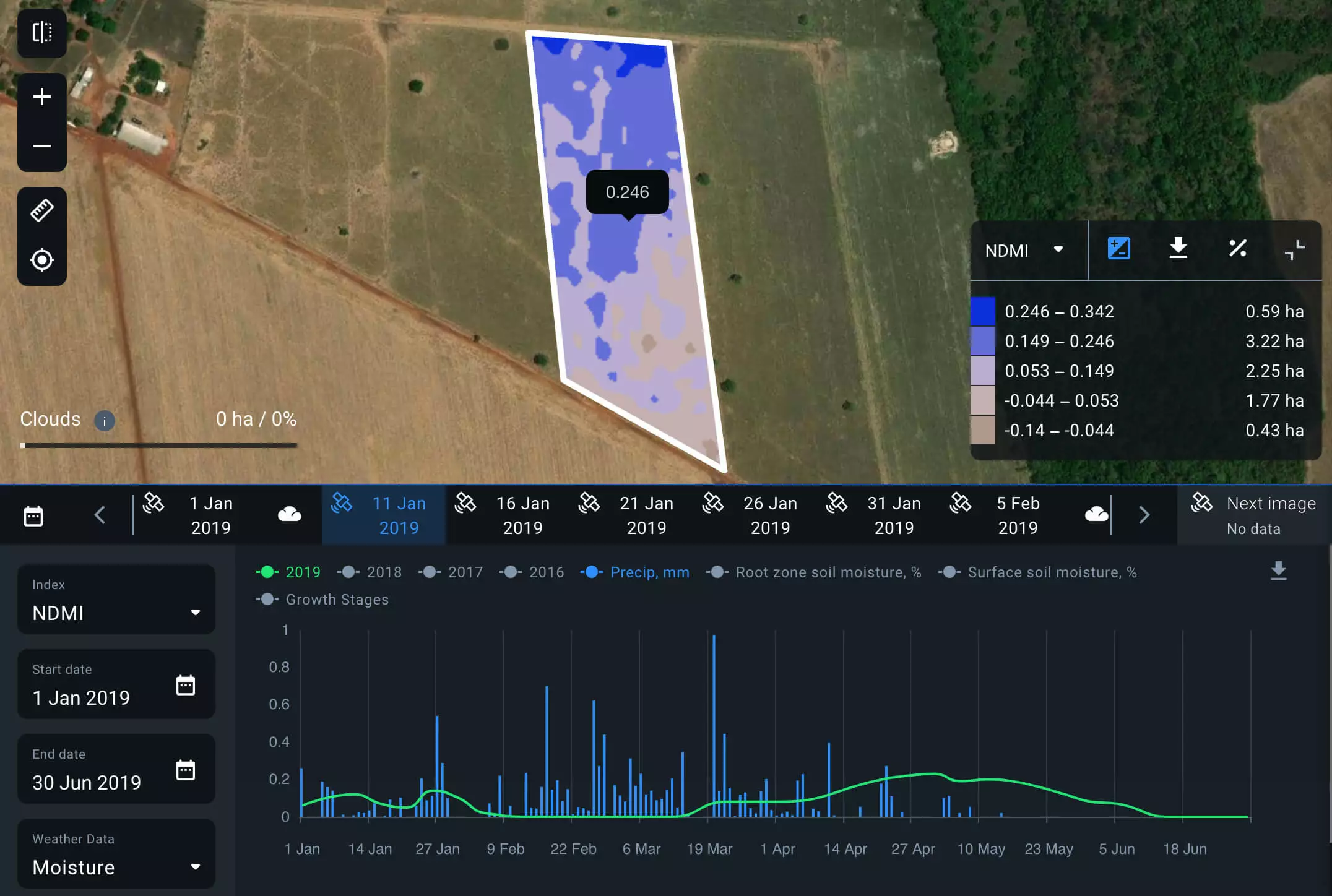
Ongoing crop state monitoring is possible with Vegetation indices on the product (NDVI, ReCI, MSAVI, NDRE, and more on request). The analysis of satellite-imagery-based vegetation indices is one of the most prominent sustainable agriculture technologies. By generating vegetation indices, EOSDA Crop Monitoring users can avail actual information on the crop state and promptly react to any identified deviance from the standard values for the current phenological stage.
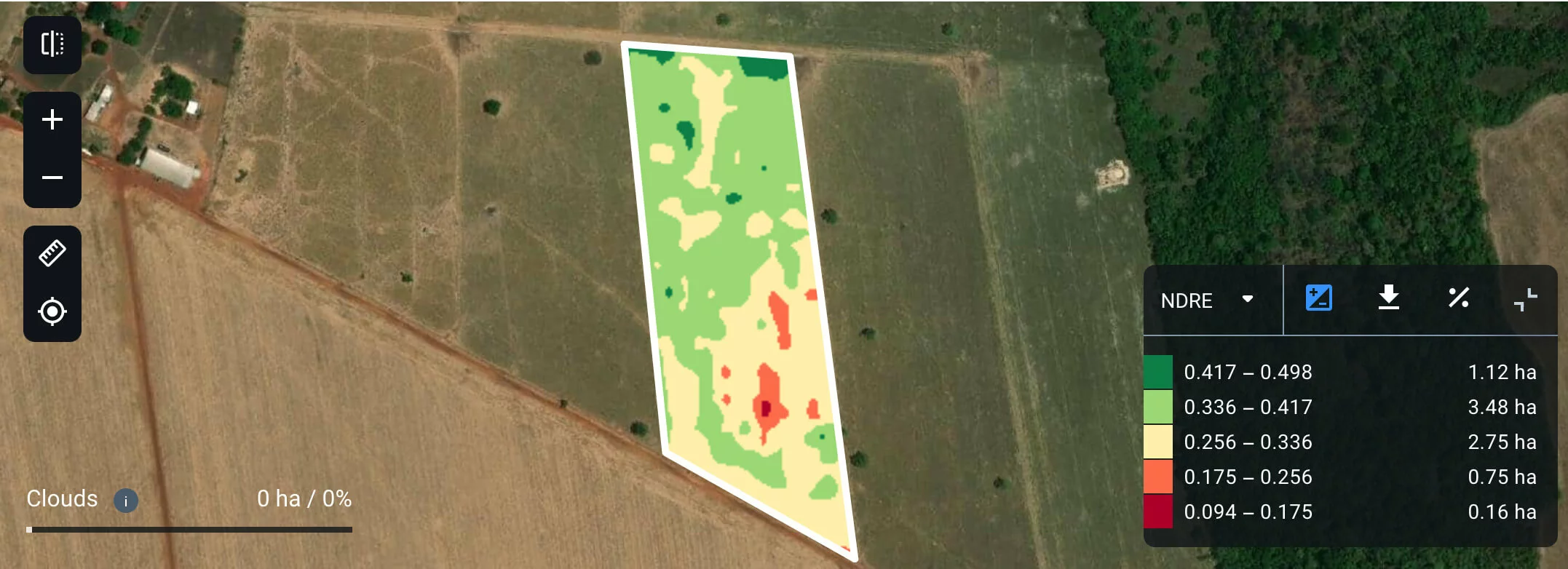
Reduction of fuel use and fossil emissions is assisted by the Scouting feature that minimizes driving to the field. Regular in-person inspection is particularly complicated when fields are scattered or vast. However, this task can be partially substituted by remote crop state monitoring with an array of vegetation indices. In this case, field scouting is necessary only when a problem is detected through abnormal index values.
In the Scouting section, farmers can set a task to scouts pinpointing the critical field zones for additional inspection, which spares the driving time and reduces fuel use. Arriving at the specified spot, the scouts will quickly identify crop diseases, pest infestations, or excessive weeds. After getting the scout’s reports about the exact cause, farmers will effectively apply the correct plant protection product only to the affected zones. This approach will spare finances and nature, meeting the goals of sustainable agriculture.
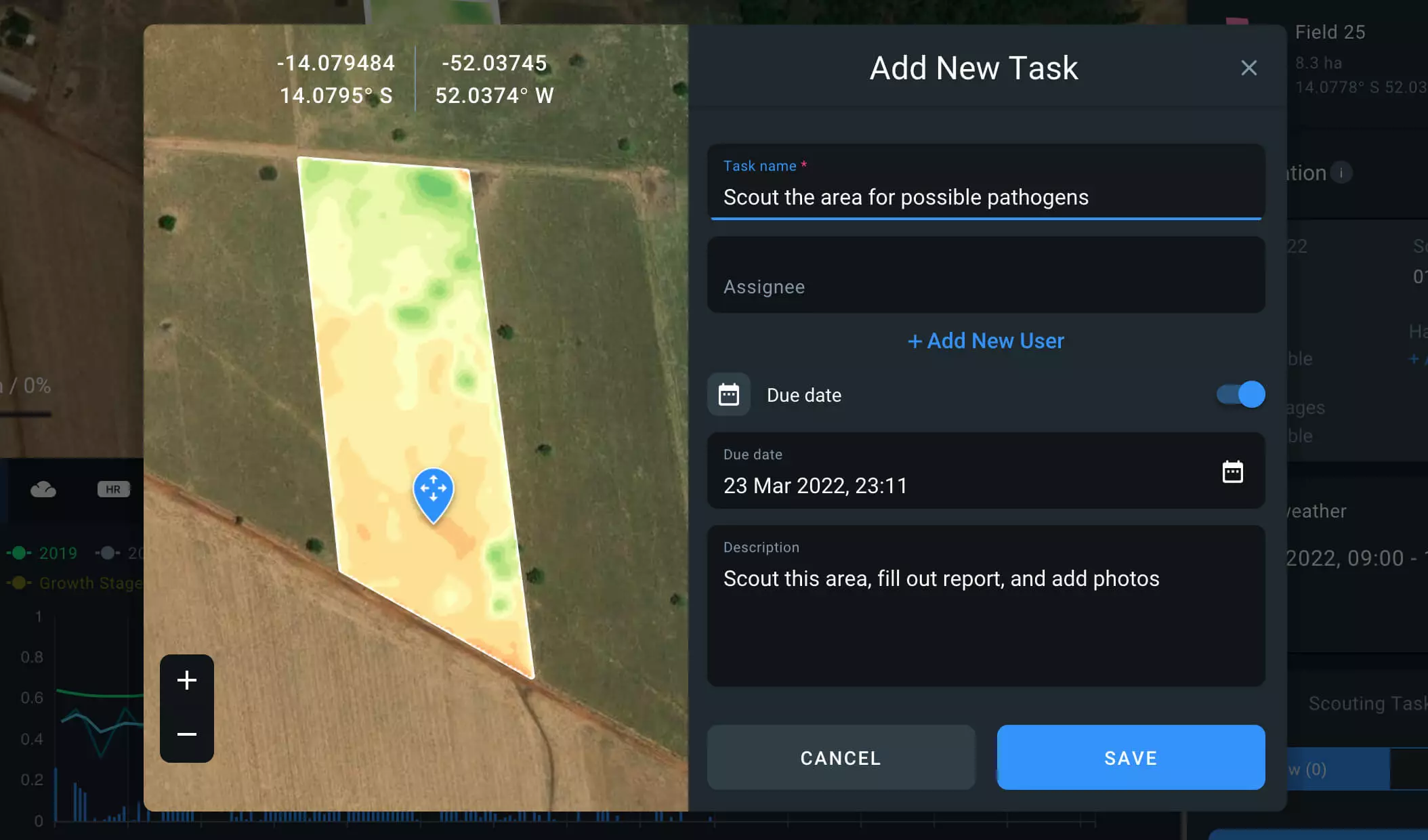
Avoided mistakes in farm management planning thanks to the Field activity log on EOSDA Crop Monitoring. By entering all completed and planned field operations into the log, agriculturalists will exclude the possibility of repeated, overlapped, or missed treatments. Besides, EOS Crop Motoring allows tracking vegetation changes after each activity, keeping all the necessary data in one place.
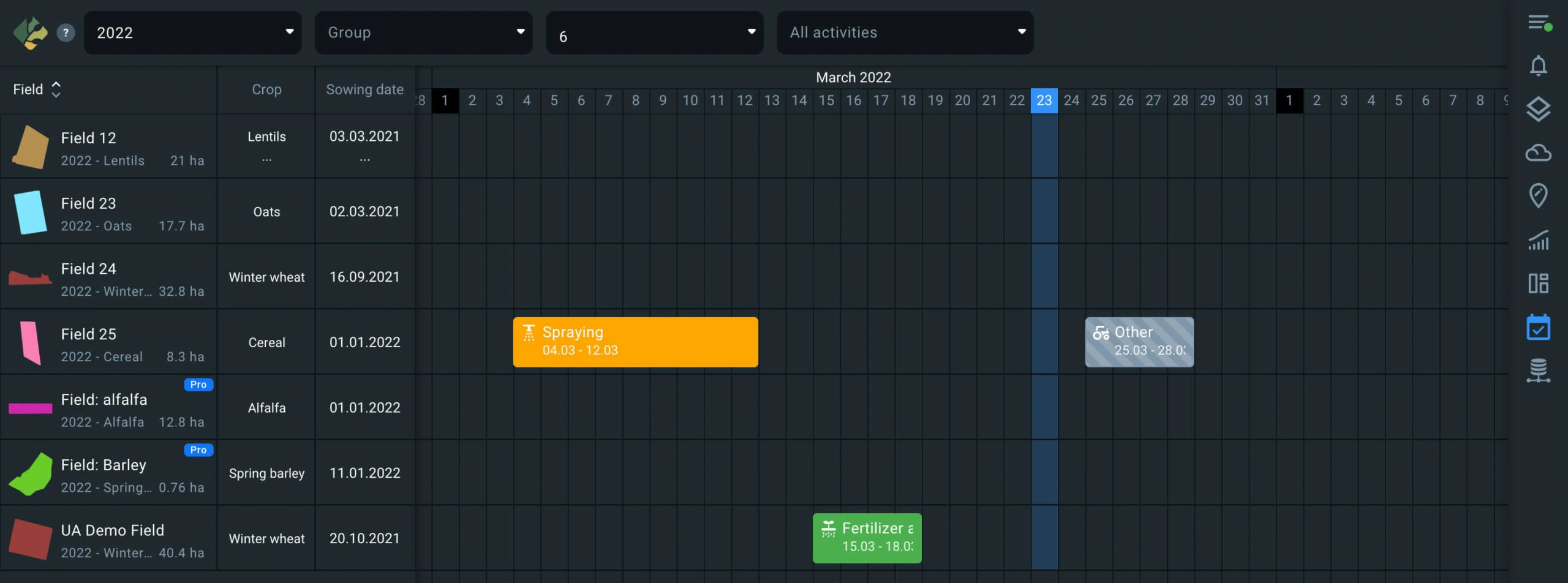
In 2023 the EOS SAT-1 satellite was launched. After the improvement, all stakeholders got by 5-7 times better tasking revisit time and 2-8 times higher resolution compared to open-access data, and EOSDA can now generate even more accurate sustainable agriculture solutions.
About the author:
Petro Kogut has a PhD in Physics and Mathematics and is the author of multiple scientific publications. He is the Soros Associated Professor as well as the head of the department of differential equations in the Oles Honchar Dnipro National University and has received a number of grants, prizes, honorary decorations, medals, and other awards. Prof. Dr. Petro Kogut is a science advisor for EOSDA.
Recent articles
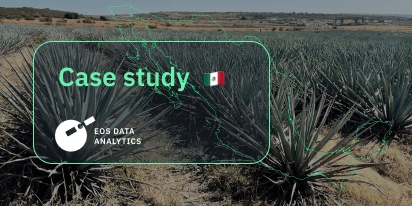
Digital Tools Improve Soil Health And Yields In Mexico
EOSDA and ITTA supported a Guanajuato farm with contour-line planning, monitoring tools, and practical guidance to reduce soil erosion and improve yields in the long run.

Analyze 2025 & Plan Your Best Year Yet: LandViewer Christmas Offer
It’s the most wonderful time of the year! The Christmas holidays are here, and so is your chance to analyze 2025 and plan a prosperous 2026 with more affordable Pro plans in LandViewer.

EOSDA Models Climate Change Impact On Sugarcane Yields
EOSDA modeled future temperature, rainfall, and other climate impacts on Veracruz sugarcane. The results help growers plan long-term adaptation strategies, including timing, varieties, and irrigation.